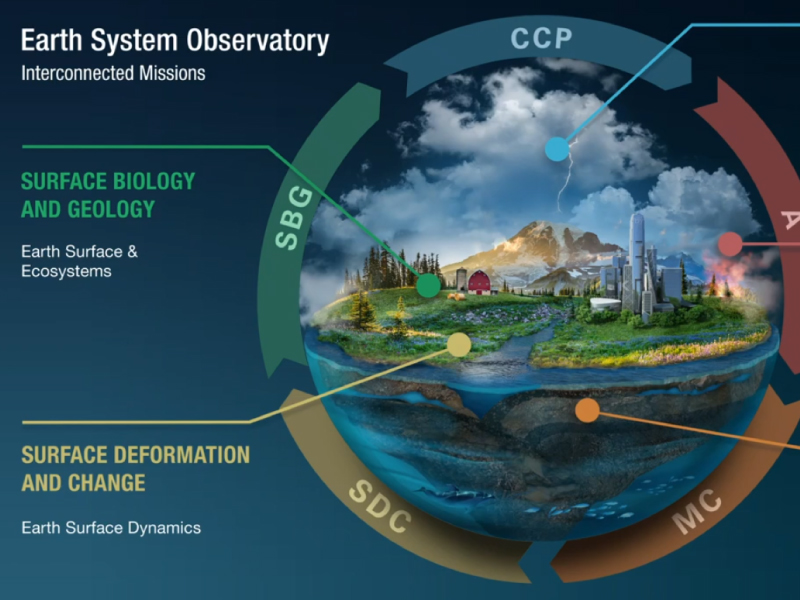Media
Earth System Observatory
[07-Sep-2021] NASA will design a new set of Earth-focused missions to provide key information to guide efforts related to climate change, natural hazard mitigation, fighting forest fires, and improving real-time agricultural processes. Each uniquely designed satellite in the Earth System Observatory will complement the others, working in tandem to create a 3D, holistic view of Earth, from bedrock to atmosphere. The observatory follows recommendations from the 2017 Earth Science Decadal Survey conducted by the National Academies of Sciences, Engineering and Medicine, which lays out recommendations for ambitious but critically necessary research and observations. Areas of focus for core of the observatory include: Aerosols: Answering the critical question of how aerosols affect the global energy balance, a key source of uncertainty in predicting climate change. Cloud, Convection, and Precipitation: Tackling the largest sources of uncertainty in future projections of climate change, air quality forecasting, and prediction of severe weather. Mass Change: Providing drought assessment and forecasting, associated planning for water use for agriculture, as well as supporting natural hazard response. Surface Biology and Geology: Understanding climate changes that impact food and agriculture, habitation, and natural resources, by answering open questions about the fluxes of carbon, water, nutrients, and energy within and between ecosystems and the atmosphere, the ocean, and the Earth. Surface Deformation and Change: Quantifying models of sea-level and landscape change driven by climate change, hazard forecasts, and disaster impact assessments, including dynamics of earthquakes, volcanoes, landslides, glaciers, groundwater, and Earth's interior. Read more here.Original Media Click on the image to play the movie. Click on the Escape key or anywhere outside the shadowbox to close.

